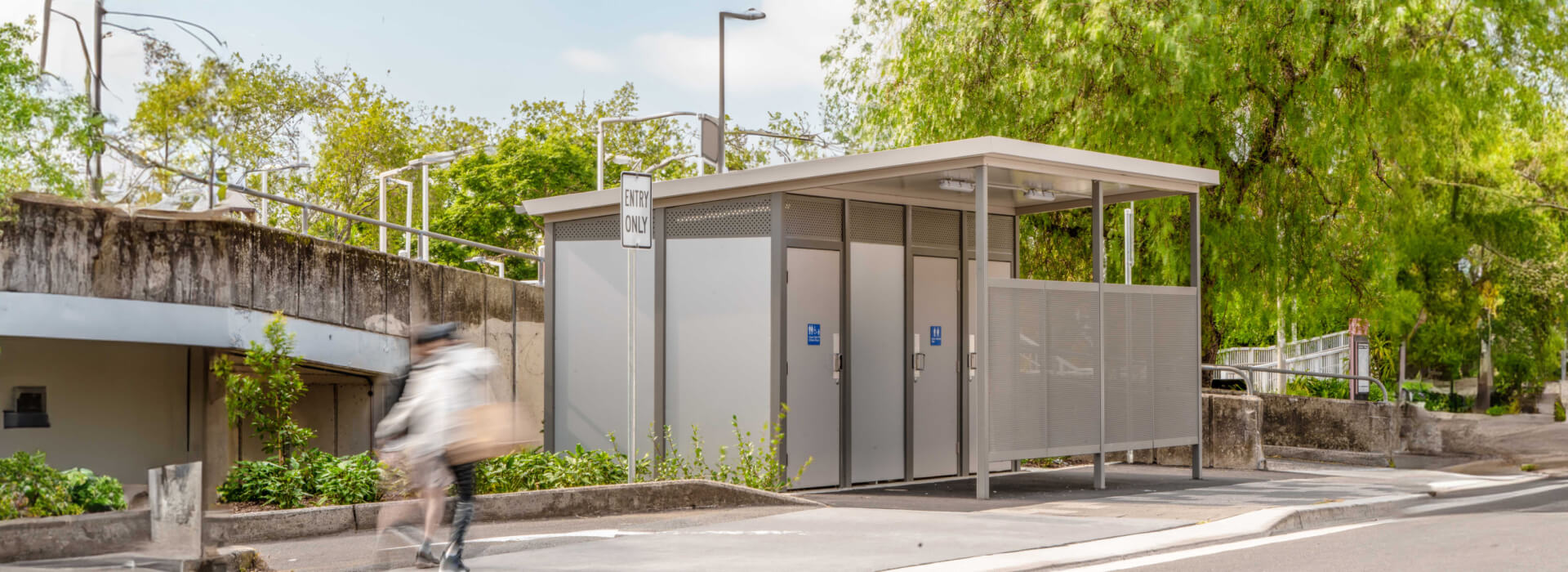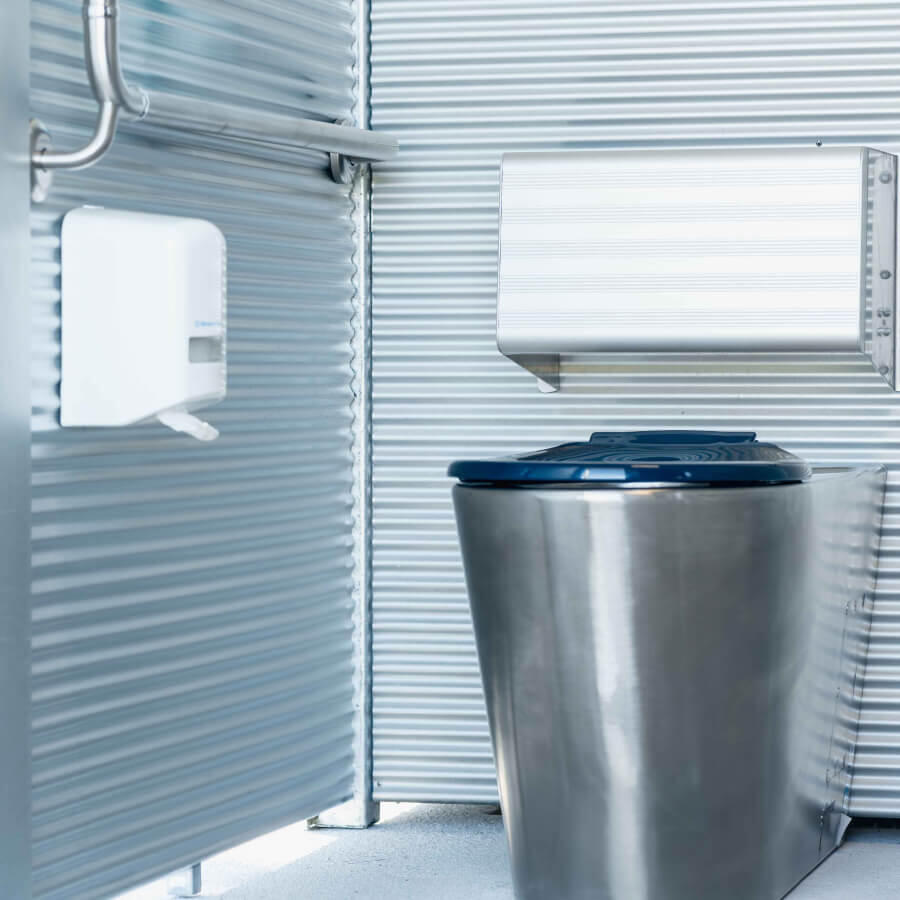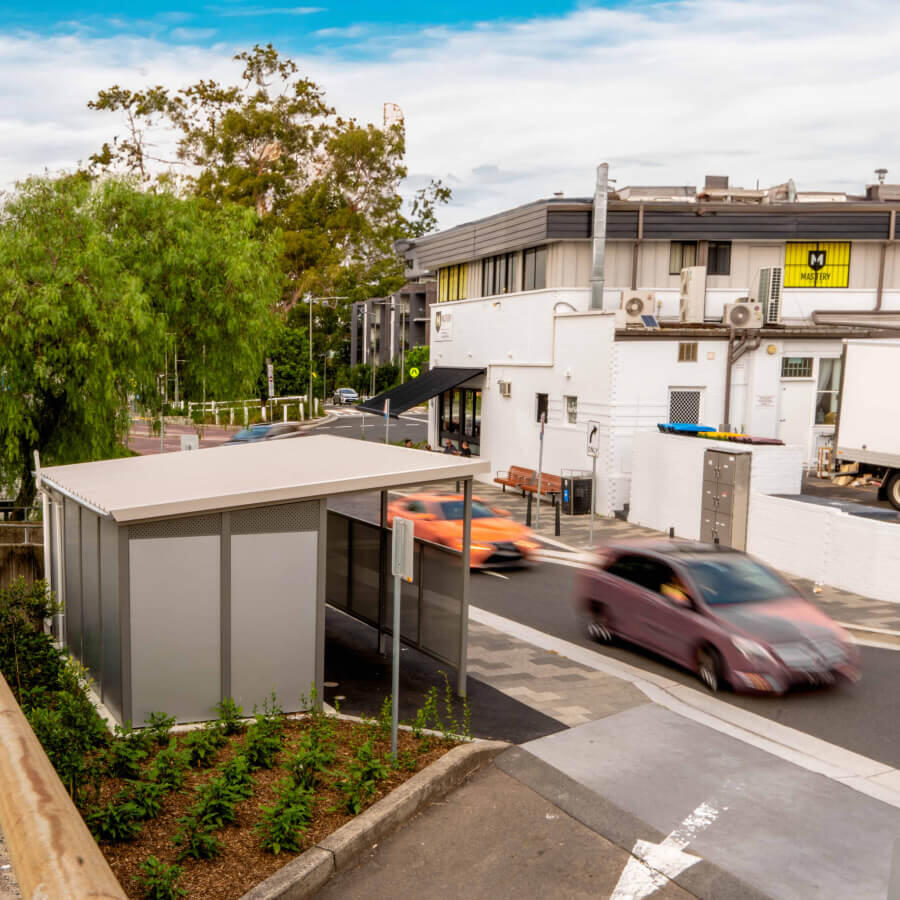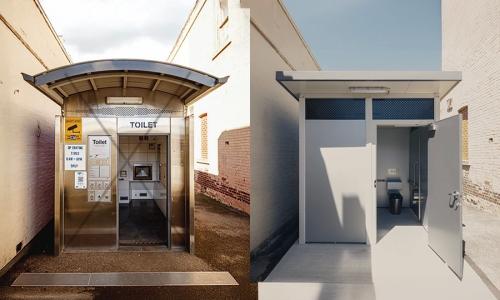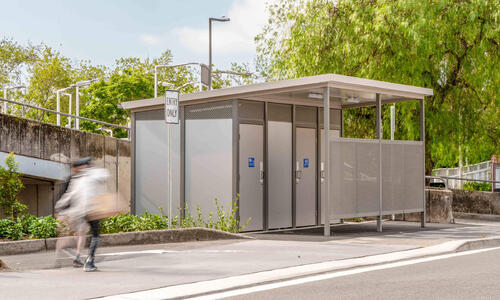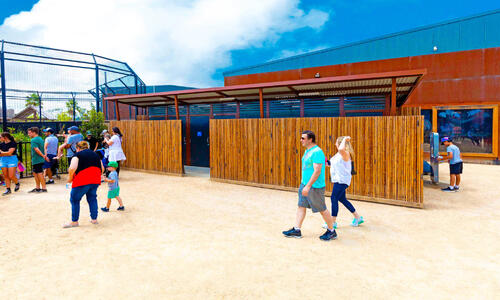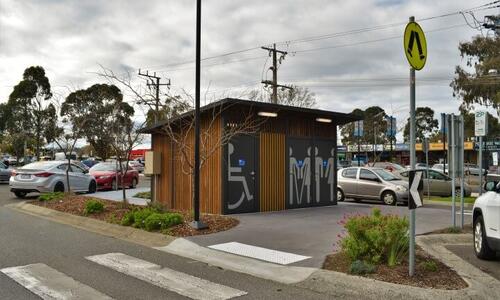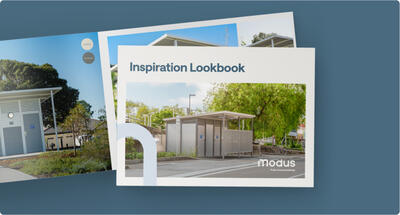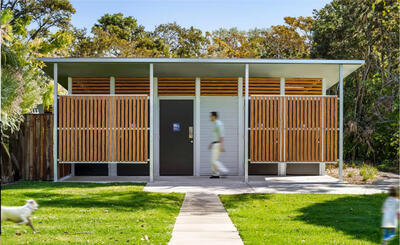Urban area toilet buildings bring unique design challenges
Designers face unique challenges developing toilet facilities for urban areas — creating functional, attractive, and durable toilet facilities requires a delicate balance of practical considerations and creative solutions.
Urban environment projects regularly face local government regulatory requirements. These may include incorporating public artwork or meeting specific procurement criteria.
Aesthetics are typically important. Such facilities must harmonise with the surrounding architecture and enhance the urban landscape. This often requires a modern design to ensure facilities blend with contemporary cityscapes.
However, urban environments present a higher risk of anti-social behaviour and attract individuals who engage in vandalism and maliciously damage facilities. Addressing this requires thoughtful planning.
Longevity and maintenance present another challenge: urban facilities typically experience high foot traffic and that subjects them to greater wear and tear. Addressing this, to minimise both maintenance and life cycle costs, demands careful consideration of construction methods and materials.
Key considerations for success
Several key features help ensure durability, maximise aesthetics, and improve ease of maintenance.
One is the use of stainless steel mini-orb internals. These (or aluminium composite materials) provide excellent impact resistance and are difficult to dent. Plus, the ribbed profile discourages graffiti and facilitates easier cleaning.
Proper lighting also plays a significant role in deterring vandalism. Well-lit areas discourage such activities. For added security, consider CCTV.
To simplify maintenance and cleaning, incorporate gaps under the walls. High-quality, durable stainless steel fixtures and doors provide increased impact resistance and greater cleanliness.
Prioritise modern styling and aesthetics. Give attention to the surrounding architecture and color themes. Colors such as greys, charcoal, and black often fit urban environments. Timber-look aluminium is also a popular option.
To meet procurement requirements and enhance visual appeal, designers may incorporate artwork or graphics on panels and verandah column designs. These aesthetic elements can also serve to deter graffiti, as vandals are less likely to deface attractive graphics, especially in areas like skateparks.
By incorporating these factors and features, designers can create toilet facilities that are not only functional and durable but also visually appealing and well-suited to urban environments.
Products ideal for urban settings
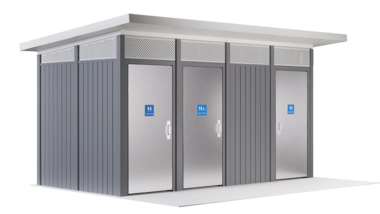
InCube
The InCube stands out as a premier toilet solution, meticulously designed and epitomising high-end functionality and aesthetic appeal.
InCubeUrban project success stories
Public Toilet Building at Gordon Station
A replacement facility for the Ku-Ring-Gai council that was suited an urban environment with high foot traffic, fully compliant with AS 1428.1 and durable enough to last for years.
Read MoreSydney Zoo Public Toilet Amenities
The brand new Sydney Zoo houses 110 Australian and international animal species, exhibited in an immersive safari-like experience. The zoo presents a unique learning experience to be…
Read MoreWebb Street Narre Warren Public Toilet Amenity Building
Webb Street is a bustling shopping precinct in Narre Warren, located in the City of Casey. The City recently made substantial safety changes and upgrades to the street, including the…
Read MoreHave a project to do?
Planning a toilet building project can be complex but we’re here to help. Reach out or start your project consultation today.
View Inspiration Lookbook
